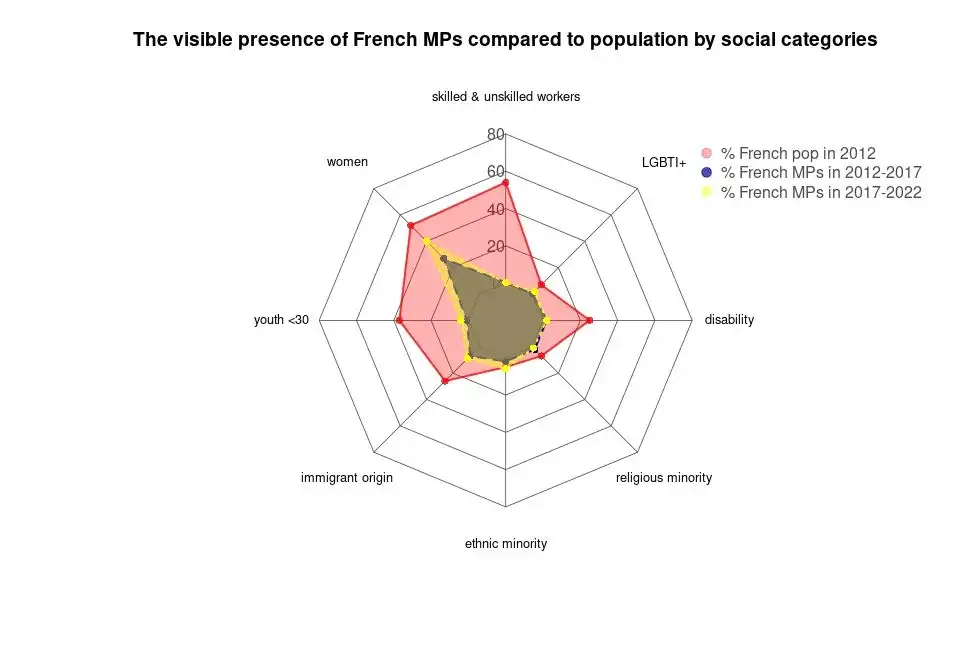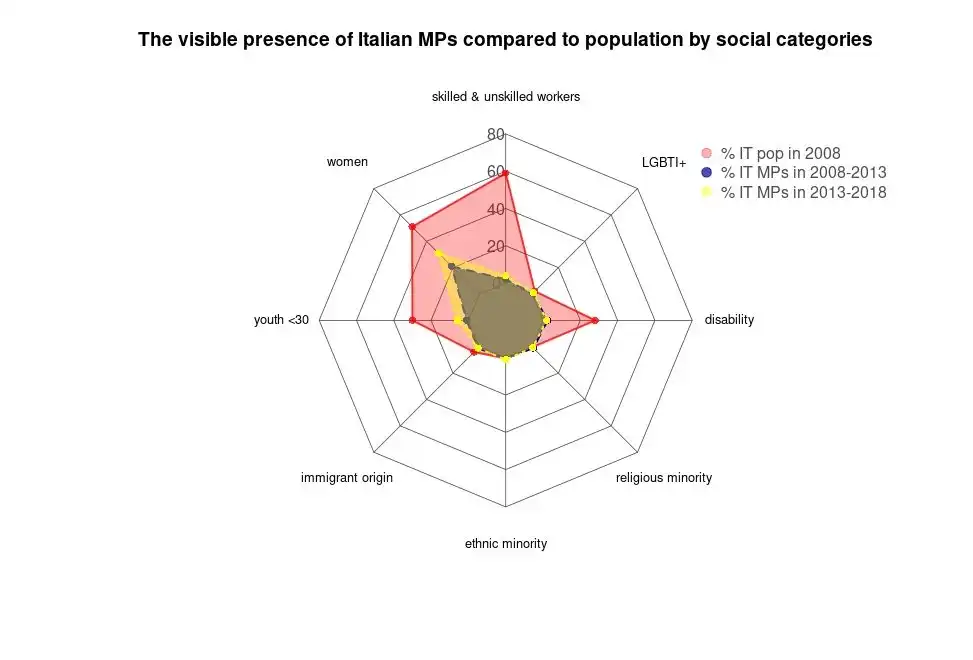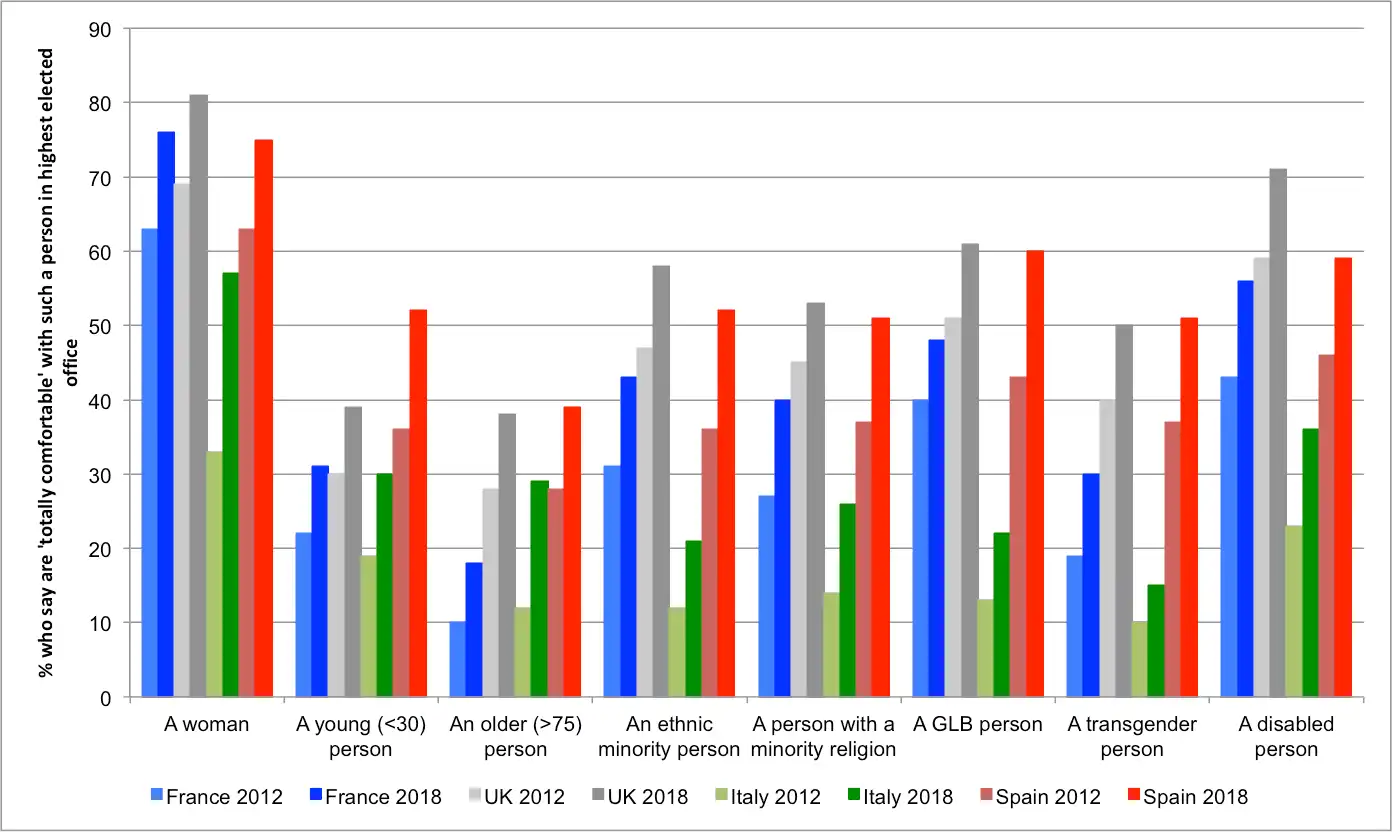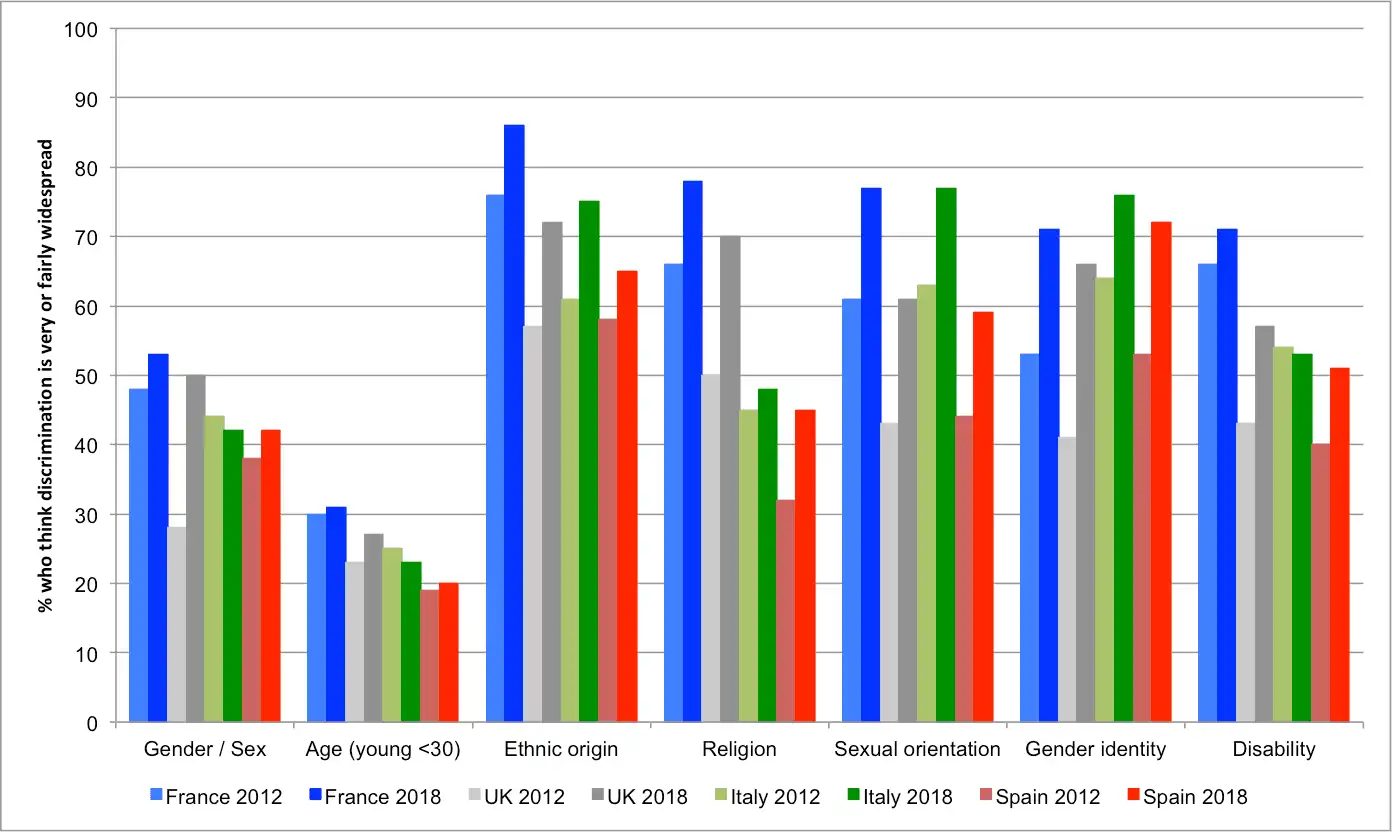Home>Understanding the visible representation gaps in democratic parliaments
30.05.2022
Understanding the visible representation gaps in democratic parliaments
On the occasion of the French legislative elections of June, the team at LIEPP (Sciences Po) discuss with Laura Morales (Professor of Comparative Politics at Sciences Po) and Claire Vincent-Mory (Post-doctoral researcher at LIEPP) how the project "Inclusive Democracies? Conceptualising and Measuring the Descriptive and Substantive Political Representation of Under-represented Groups in Democratic Parliaments (InclusiveParl)" can inform discussions and debates around the candidates running for these elections.
First, can you tell us briefly what is the focus of the project and what is its relevance?
Established representative democracies are currently facing a major crisis of citizen confidence, which manifests itself by a strong feeling among citizens that elected representatives are detached from the needs and demands of those whom they represent, and by growing electoral abstention. Oftentimes, this detachment is partly attributed (both by citizens and analysts) to the professionalisation and lack of social inclusiveness of representative institutions.
The aspiration to make public institutions more inclusive clearly affects various bodies and centres of power at the economic (e.g., boards of directors), social (e.g., mass media), and political (e.g., elected office) levels. However, it is in the political arena where the representation of the diversity of our societies has the most wide-ranging implications. Elected officials not only constitute key symbols of the allocation of power in society, they also exercise power and influence the regulation of diversity in other arenas of the public sphere.
As an illustration of this tension between aspirations and realisation, in June 2017 in France, the then newly created party led by Emmanuel Macron (La République en Marche !) won a majority of 53% of the seats in the National Assembly. This unprecedented success was partially fostered by the pledge to renew the political ranks that would enable 'normal people' to enter national politics. A similar impetus for political renewal and greater inclusiveness happened also in Italy and Spain in the mid-2010s, with the emergence of new and strong challenger parties (Movimento Cinque Stelle, and Ciudadanos and Podemos, respectively). A few years after this wave of renewal of the ranks of national legislative elites, it is unclear whether elite renewal has transferred into actual substantive change in terms of policy outputs. The project InclusiveParl addresses a number of interrelated questions around these tensions of political representation: To what extent is democratic representation biassed? Is there a link between the "visible" presence of elected representatives from marginalised and minority groups and the way and extent to which the interests and issues that these groups care about are included in the political and policy agenda? Does this link vary across European countries and over time?
The project InclusiveParl addresses these questions through an examination of the link between the visible descriptive political representation of several under-represented groups (women, youth, working classes, ethnic and migrant minorities, religious minorities, people with disabilities and LGBTI+) and their substantive political representation in four national parliaments (France, Italy, Spain and the United Kingdom).
How do you approach the examination of these challenges around political representation?
Since Hanna Pitkin's seminal 1967 book on The Concept of Representation, scholarship in political science has traditionally distinguished between descriptive, substantive and symbolic representation. Descriptive representation, applied to the political domain, refers to the ability of those present to re-present (or stand for) those absent and, hence, to mirror in one way or another (some of) their key characteristics. Substantive representation, instead, requires that the representatives act for those absent by representing their preferences, interests, demands or needs. Symbolic representation refers to the ability to stand in for, to substitute or replace the represented without necessarily resembling them or accurately corresponding to them.
Given these long-established distinctions, most of the research on the gaps in descriptive political representation revolves around the notion of presence and judges the quality of political descriptive representation based on it. By contrast, we contend that the conceptual and theoretical discussion around representation gaps needs to better incorporate an additional element to judge the ability to descriptively represent any group or category: visibility. We argue that the visibility of group identities and belonging is a necessary (but insufficient) condition to legitimately claim to descriptively represent a social group or category.
For example, an elected representative may belong to a religious denomination, or have a minority gender identity or sexual orientation without these being visible in the public arena. In such cases, the invisibility of their identities and belongings prevents them from descriptively representing such groups, despite their presence. We consider visibility as the result of various intersecting mechanisms: the material characteristics of the elected official (what is present), the agency of the official (what is presented), and voter perceptions (what is perceived).
From an empirical point of view, the project articulates the study of descriptive political representation around the measurement of the visibility of self-designation statements or of the social characteristics of elected legislators through the creation of large databases for the four countries studied since the 1990s, using detailed and comprehensive coding protocols that operationalise our approach to visibility. The various complexities in apprehending visible descriptive representation require a balanced approach: self-designation does not always match what is materially visible or voters' perceptions. In turn, substantive representation is studied through the analysis of the written questions submitted by legislators to the Executive, as well as through the selection of a number of law projects that particularly affect the interests of the studied under-represented groups.
What are the project findings at this stage and how can they inform the forthcoming French legislative elections?
At this stage we have collected biographical information on all the legislators who have held a seat in the lower chambers of parliament in France, Italy, Spain and the United Kingdom since the early 1990s for: their (apparent) sex, age, occupation prior to being elected parliamentarian, their own (and their parents') countries of birth and nationality, their self-designated ethnic identity (if any), their self-designated religious affiliation (if any) and, since the mid-2000s their self-designated gender identity and sexual orientation (if any) and their statements about any disabilities or impairments they may have [1]. These large biographical data sets contain also a wide range of information about their parliamentary tenure, the political and partisan careers, as well as their participation in parliamentary committees and activities. All of these pieces of information have been extracted from publicly available sources on the members of parliament, from the parliamentary websites, their own personal websites, their social media pages, newspaper and TV interviews, etc.
With these biographical data and the official statistics and survey data relating to the overall population in France, Italy, Spain and the United Kingdom, we can portray the extent of the representation gaps for each of the various social categories in the four countries and how they have evolved over time. We illustrate this with Figure 1, where we show the extent of the gaps for each of the eight social categories considered. The red areas demarcate the respective shares in the population, the blue areas represent the shares visibly identified among parliamentarians in the late 2000s or early 2010s, and the yellow areas in the more recent legislative terms.
Figure 1. The gap between population shares and visible descriptive presence in parliament in France, Italy, Spain and the United Kingdom for two recent parliamentary terms
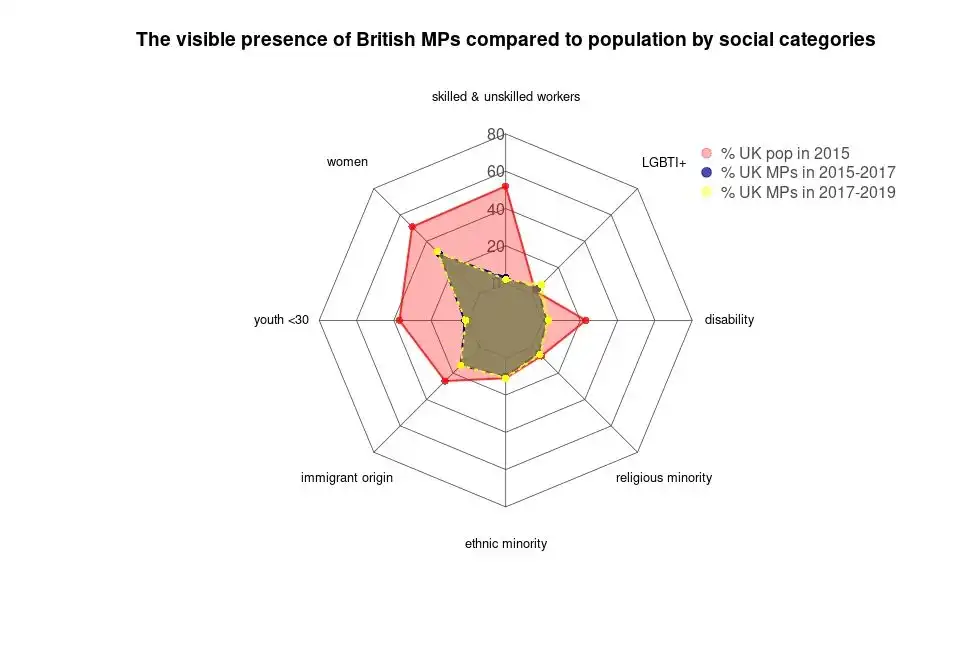
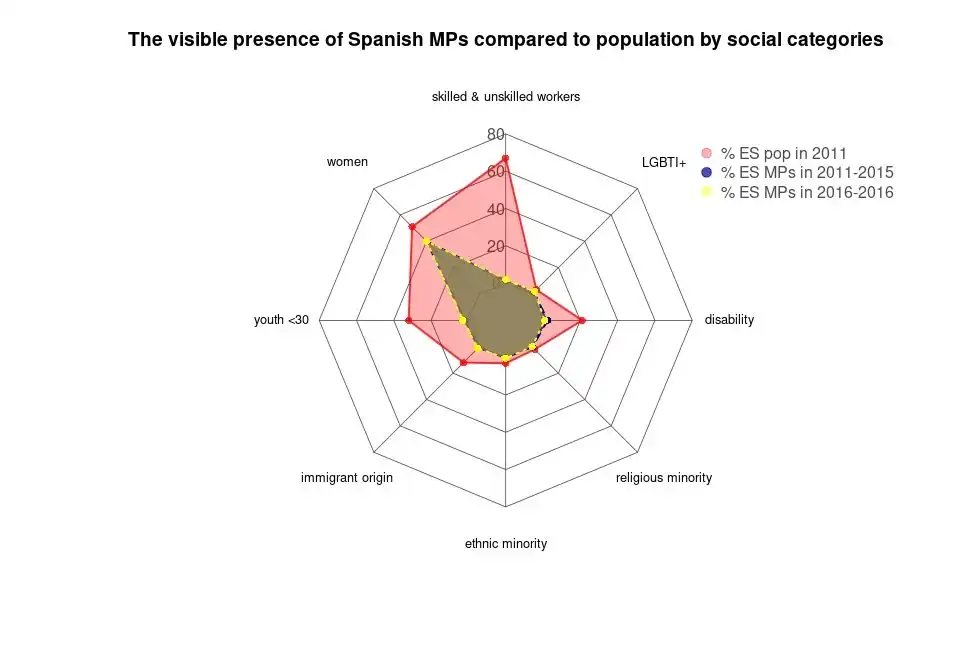
Source: InclusiveParl project data set for data on legislators, several official statistics and surveys for the data on the population.
As we can see, the visible descriptive representation of the working and popular classes (which includes both skilled and low-skilled workers) and the youth present the largest gaps in all four countries, with little to no progress in recent times. Women's representation has improved in France and Italy in their most recent complete parliamentary terms, but both countries started from a worse prior point compared to the 40% representation of women in the Spanish parliament in 2011. The UK House of Commons still lags behind with only around 30% of women MPs (35% in the current 2019-2024 legislature). Overall, for France, the expanding yellow area in the graph suggests that visible descriptive representation has been gradually expanding from one parliamentary term to the next.
The considerable evolution of the inclusiveness of the French National Assembly in the last three terms, as well as the remaining visible descriptive representation gaps, are most evident in Figure 2, which provides the overtime change in the visible presence of legislators per social category compared to the population shares. While it is clear that political parties and electoral coalitions have become gradually more inclusive of women and the population of immigrant origin, the increased visibility of other social groups is still minimal (e.g. for youth and LGBTI+) or none (for the working classes, religious minorities or people with disabilities).
Figure 2. The visible descriptive representation gap in France, 2007-2022
Source: InclusiveParl project data set for data on legislators
Although the gap in visible descriptive representation is, to a certain extent, due to the absence of legislators from some of these groups (e.g. in the case of women, youth or working classes), for other groups the gap is also due to the lack of visibility of such group identities or belongings. For example, it is very likely that a larger number of French legislators are of immigrant origin or of minority religious faiths but that they have been reluctant to share the information about their ancestry and religious feelings because of the strong emphasis in France around the notion of laicité and the political taboo around communitarian identities (communautarisme). Similarly, it is quite likely that a larger number of them have some form of disability or impairment, or a non-heteronormal sexual preference or gender identity, and that they have not shared this with the public because they feel this information pertains to their private life and not their public representation role. Some may prefer not to share such details about themselves for fear of harassment or electoral penalties, and others may prefer not to be 'pigeonholed' in a given social category.
In fact, out of the 12 French 2017-2022 parliamentarians who publicly identified as LGBTI+, 7 were 'out' before the elections (58%) and the remaining 5 did so at a later stage. Similarly, out of the 11 French 2017-2022 parliamentarians who publicly declared to have a disability, only 4 (36%) did so before the 2017 elections.
Candidates to elected office may have extremely valid and legitimate reasons not to disclose personal information about themselves, and qualitative research on minority legislators demonstrates that the aforementioned reasons are recurrent concerns expressed by legislators who refrain from sharing such biographical information with the public. Nevertheless, this project shows that the pro-active agency of elected officials - what they present to the public - is an essential component of descriptive representation, as without this agency some groups will not be visibly present and without such visibility they cannot be descriptively represented. Now that parties and coalitions are presenting new candidates for the June 2022 French legislative elections, these candidates have a good opportunity to present themselves to the French electorate in a variety of ways. Opening up to the public on the various social characteristics, belongings and identities that define 'who they are' - individually, for each of them - will allow them both to help the public getting to know them better (and, hence, nurture that feeling of closeness that will facilitate voting for them) and also to provide visible descriptive representation to groups that have been traditionally marginalised from political representation.
Do prejudice and discriminatory attitudes play a role?
To a certain extent, they do, but not in obvious ways. On the one hand, the differences in the degree of parliamentary inclusiveness that we can observe across the four countries seem to run parallel to the relative degree of acceptance of (or lack of prejudice against) each of the studied groups. Figure 3 shows the percentage of citizens in each country (and for two time points, in 2012 and 2018) that say that they are completely comfortable with a person with a given characteristic holding the highest elected office in the country (i.e. President or Prime Minister). As a general rule and for most groups, the UK public is the most accepting or least prejudiced, followed by the Spanish, and then the French. For most groups, Italian citizens are (by a large margin) the least accepting or most prejudiced, and particularly of LGBTI+ minorities.
On the other hand, there is a link between inclusivity in parliaments and the public awareness of the discrimination faced by most of these under-represented groups. This has increased, as can be seen from the perceptions of widespread discrimination that citizens report on Eurobarometer surveys (Figure 4). Generally speaking, these are larger for ethnic minorities, LGBTI+ minorities and religious minorities. Interestingly enough, citizens of these four countries do not tend to consider that discrimination against young people is widespread, and the Eurobarometer surveys do not include questions about working class people or poorer people. Hence, the trend towards greater inclusivity over time matches the trend towards greater awareness of the discrimination facing these marginalized groups, but public perceptions of discrimination do not necessarily match the gap in visible presence in parliaments, given that the groups that face larger representation gaps are those for which there is a reduced awareness of them experiencing discrimination.
Figure 3. Acceptance of people with given characteristics for the highest elected office by group and country
Source: Eurobarometer 393 (2012) and Eurobarometer 83.4 (2018)
Figure 4. Public perceptions of widespread discrimination by group and country
Source: Eurobarometer 393 (2012) and Eurobarometer 83.4 (2018)
These results suggest that citizens' attitudes are connected in complex ways to how inclusive their parliaments are, as political elites reflect the underlying awareness of the need to combat discrimination at the same time that they grapple with the underlying prejudice vis à vis the supposed political abilities and trustworthiness that they will perceive (and to a certain extent share) amidst their voters. In turn, greater parliamentary inclusivity may also foster attitudinal change. Hence, achieving greater democratic inclusivity requires both initiative from political parties and elites, and changes in public perceptions and attitudes towards under-represented groups.
____
[1] We empirically appraise these social characteristics and self-designations as follows: 1) Sex: the stated or apparent sex of the legislator (male, female, other); 2) Age: the stated year of birth of the legislator; 3) Immigrant origin: whether the legislator and/or any of their parents were born in a country other than the country where the legislator was elected with foreign nationality at birth; 4) Ethnic minority: whether the legislator has self-identified with any ethnic, racial or bi-national label; 5) Religious minority: whether the legislator has self-identified with a non-Christian religion; 6) Disability: whether the legislator either has declared a disability or is visibly disabled; 7) LGBTI+: whether the legislator has declared being LGBTI+ or a trusted source has published that the legislator is LGBTI+; 7) Workers: based on the occupation of the legislator immediately prior to first joining parliament (coded into ISCO-08), and Daniel Oesch's (2006) classification of occupations based on ISCO-08 we include all occupations classified as skilled or low-skilled manual workers (ISCO groups 6 and 8), skilled and unskilled clerks (ISCO group 4 with a few exceptions and a few inclusions from groups 3 and 5), and skilled and low-skilled service workers (most of ISCO group 5 and a few from groups 3, 8 and 9).
References cited:
Oesch, Daniel. 2006. "Coming to Grips with a Changing Class Structure. An Analysis of Employment Stratification in Britain, Germany, Sweden and Switzerland.", International Sociology, 21 (2): 263-288.
Pitkin, Hanna F. 1967. The Concept of Representation. Berkeley: University of California Press.
Acknowledgements
This project and publication benefits from the support provided by the ANR and the French Government under the "Investissements d'Avenir" program LABEX LIEPP (ANR-11-LABX-0091, ANR-11-IDEX-0005-02) and the IdEx Université Paris Cité (ANR-18-IDEX-0001)
Laura Morales and Claire Vincent-Mory thank the research assistance of: Lucile Baumann, Martha Bearne, Charlotte Beddouk-Ginesy, Camille Brebion, Annina Claesson, Alma Gamper Saez, Gianni de Gennaro, Clémence Fontan-Ducret, Emma Lancha Hernández, Ester Molinaroli, Valerie Rein, and Yuxi Yi.

